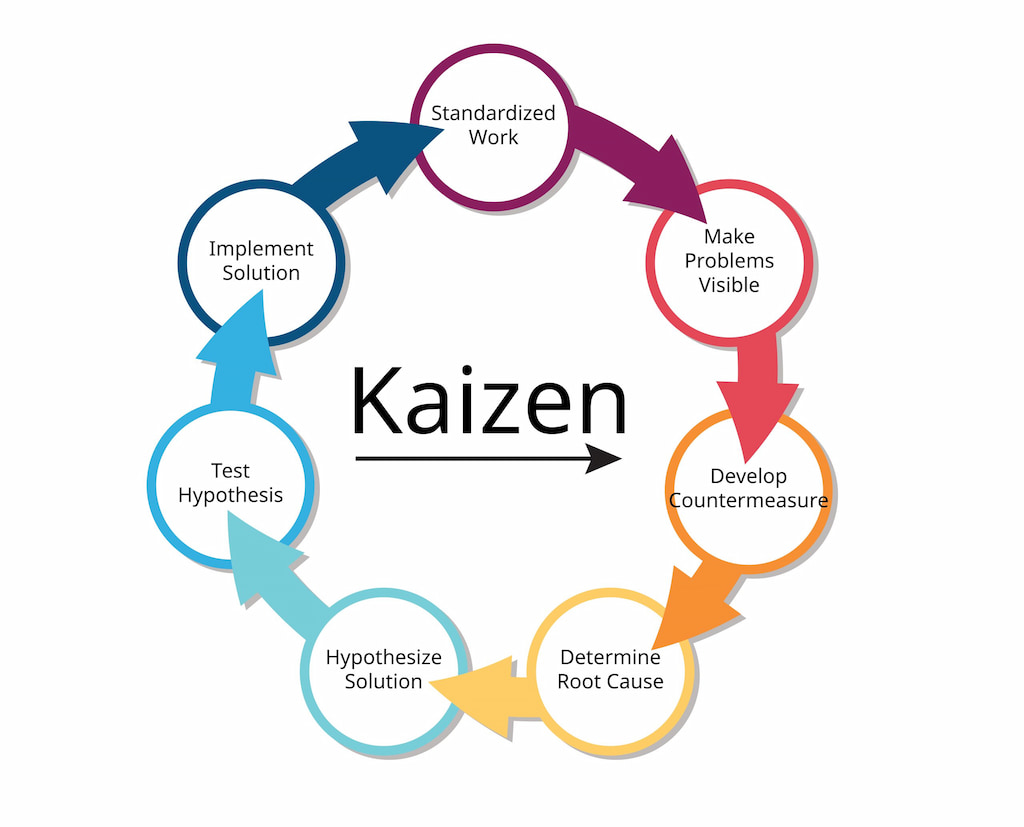A positive attitude in the workplace is more than just a feel-good mindset; it’s a crucial element that can significantly impact the overall success and productivity of a team. Employees who maintain a positive outlook are more likely to engage with their tasks, collaborate effectively with colleagues, and contribute to a harmonious and motivating work environment. In this article, we will find the answer to the question “what is a positive attitude,” explore the importance of fostering a positive attitude at work, and provide practical strategies on how to have and sustain a better attitude. For example, using a free time card calculator can help employees track their time effectively and maintain a positive workflow.
Benefits of a Positive Attitude at the Workplace
Enhanced productivity
Employees with a positive attitude are generally more motivated and focused on their tasks. This increased employee motivation translates to higher productivity, as they are more willing to put in the effort and go the extra mile. Positive employees also tend to be more engaged with their work, leading to better performance and efficiency.
Improved team collaboration
A positive attitude promotes better communication and cooperation among team members. When employees approach interactions with a positive mindset, they are more likely to listen actively, share ideas openly, and work together harmoniously. This collaboration enhances overall team dynamics, making it easier to achieve common goals and complete projects successfully.

Reduced stress levels
Maintaining a positive outlook can significantly reduce stress levels in the workplace. Employees who focus on the positive aspects of their work and remain optimistic are better equipped to handle stress and setbacks. This creates a more relaxed and enjoyable work environment, reducing the likelihood of burnout and absenteeism.
Higher job satisfaction
A positive attitude is closely linked to a better employee experience and higher job satisfaction. Employees who approach their work with enthusiasm and optimism are more likely to find fulfillment in their roles. This satisfaction can lead to increased loyalty to the company and a lower turnover rate, as employees feel more connected to their work and their organization.
Better problem-solving
A positive mindset encourages creative thinking and resilience. Employees with a positive attitude are more likely to view challenges as opportunities rather than obstacles. This perspective enables them to approach problems with a solutions-oriented mindset, leading to more effective problem-solving and innovation.

Enhanced customer service
Employees who maintain a positive attitude are more likely to provide excellent customer service. Their upbeat demeanor can create a welcoming and pleasant experience for customers, leading to higher customer satisfaction and retention. Positive interactions with employees can also enhance the company’s reputation and attract more business.
Boosted morale
A workplace characterized by positivity can significantly boost overall morale. When employees feel positive about their work environment, they are more likely to be engaged, motivated, and supportive of one another. This high morale creates a more pleasant and inspiring workplace, contributing to the overall success and well-being of the organization.
In essence, a positive attitude isn’t just about feeling good—it’s about creating a work environment where people are motivated, collaborative, and engaged. This not only enhances personal and team performance but also contributes to the long-term success and growth of the organization.
How to Develop a Positive Attitude
Positivity in the workplace not only enhances your personal well-being but also creates a more collaborative and supportive environment for everyone. Here are practical steps to help you cultivate and maintain a positive attitude at work.
1. Practice gratitude
- Start your day by noting three things you’re grateful for at work. It could be supportive colleagues, a recent project success, or simply the coffee machine in the break room. This habit shifts your focus from what’s wrong to what’s right.
- Real-world application: Companies like Google encourage employees to maintain gratitude journals, fostering a culture of positivity and appreciation.

2. Focus on solutions, not problems
- When faced with a challenging project, instead of complaining about the difficulties, brainstorm possible solutions. If a deadline is tight, think about reallocating resources or asking for help from your team.
- Real-world application: At Toyota, the principle of Kaizen (continuous improvement) involves every employee in problem-solving, creating a proactive and positive work environment.

3. Surround yourself with positive people
- Seek out colleagues who are optimistic and enthusiastic about their work. Engage in conversations with them during breaks or team lunches to boost your own mood and outlook.
- Real-world application: Many successful tech companies, such as Facebook, organize regular team-building activities to help employees connect and foster positive relationships.
4. Set realistic goals
- Break down large projects into manageable tasks and set achievable deadlines for each. Celebrate small wins along the way to maintain motivation and a positive attitude.
- Real-world application: SMART (Specific, Measurable, Achievable, Relevant, Time-bound) goals are used in many organizations, like Microsoft, to keep employees focused and positive about their progress.

5. Maintain work-life balance
- Ensure you have time for hobbies, exercise, and family. Taking regular breaks during the day can also help you return to work with a refreshed mind.
- Real-world application: Companies like Salesforce offer flexible working hours and remote work options, recognizing that a balanced life leads to happier, more positive employees.
6. Seek feedback and learn from it
- Instead of dreading performance reviews, view them as opportunities for growth. Ask for constructive feedback and use it to improve your skills and performance.
- Real-world application: At Netflix, a culture of open feedback helps employees continuously improve and stay positive about their development.
7. Stay healthy
- Regular exercise, a balanced diet, and adequate sleep significantly impact your mood and energy levels. Incorporate short walks during lunch breaks and choose nutritious snacks.
- Real-world application: Many companies, like Adobe, provide wellness programs and on-site fitness facilities to support their employees’ health and positivity.

8. Practice mindfulness
- Spend a few minutes each day practicing deep breathing or meditation to reduce stress and increase your focus. Apps like Headspace can guide you through quick, effective mindfulness exercises.
- Real-world application: Aetna, a health insurance company, offers mindfulness training to employees, resulting in reduced stress and improved overall well-being.
9. Celebrate successes
- Acknowledge your own achievements and those of your colleagues. Whether it’s completing a project or hitting a sales target, take time to celebrate and appreciate the effort put in.
- Real-world application: Companies like Zappos have a tradition of ringing a bell in the office to celebrate milestones, creating a culture of recognition and positivity.

10. Embrace challenges as opportunities
- When encountering a difficult task, view it as a chance to learn and grow rather than an obstacle. Reflect on past challenges you’ve overcome to build confidence.
- Real-world application: At Amazon, employees are encouraged to “think big” and tackle ambitious projects, fostering a culture where challenges are seen as opportunities for innovation.
11. Develop a positive self-talk habit
- Replace negative thoughts with positive affirmations. For instance, instead of thinking, “I can’t handle this,” tell yourself, “I am capable and will find a way.”
- Real-world application: Many leaders, like Oprah Winfrey, advocate for positive self-talk, which has been instrumental in their success and maintaining a positive mindset.
12. Find purpose in your work
- Connect your daily tasks to the larger goals of the organization. Understanding how your role contributes to the company’s mission can enhance your sense of purpose and positivity.
- Real-world application: Nonprofit organizations like Habitat for Humanity ensure that employees understand the impact of their work, fostering a motivated and positive workforce.
13. Stay organized
- Keep your workspace tidy and use tools like to-do lists or digital planners to manage tasks effectively. An organized environment reduces stress and promotes a positive mindset.
- Real-world application: The use of project management tools like Asana or Trello helps teams stay organized and focused, leading to a more positive and productive work atmosphere.

14. Help others
- Offer assistance to a colleague who is struggling with a task. Acts of kindness and support not only help others but also boost your own mood and sense of accomplishment.
- Real-world application: At companies like LinkedIn, a culture of collaboration and mutual support is encouraged, leading to a more positive and engaged workforce.
15. Seek continuous learning
- Take advantage of training programs, workshops, and seminars to enhance your skills. Learning new things keeps you engaged and positive about your career growth.
- Real-world application: Google’s “20% time” policy allows employees to spend a portion of their time on projects they are passionate about, promoting continuous learning and innovation.
By implementing these tips and strategies, having a positive attitude is easy and quick, leading to a more fulfilling and productive career.
Overcoming Challenges to Maintaining a Positive Attitude
Despite the best efforts to cultivate a positive mindset, certain challenges can make it difficult to maintain a positive attitude at work. Here’s how to tackle these obstacles effectively:
👿 Dealing with workplace conflict
- Open communication: Address conflicts directly with clear and respectful communication. For example, if you have a disagreement with a team member, request a private meeting to discuss your concerns and find common ground.
- Empathy: Try to understand the other person’s perspective. This can help in finding mutually agreeable solutions and reducing tension.
- Seek mediation: If direct communication doesn’t resolve the conflict, involve a neutral third party to mediate and help reach a resolution.
😒 Handling workload stress
- Prioritize tasks: Break down tasks into manageable parts and prioritize them based on deadlines and importance. For instance, create a to-do list and focus on completing high-priority tasks first.
- Delegate: Share responsibilities with team members where possible. This helps in distributing the workload and easing individual stress.
- Use tools: Implement project management tools to organize tasks and track progress efficiently, reducing the feeling of being overwhelmed.
🗻 Overcoming setbacks
- View them as learning opportunities: Instead of dwelling on failures, treat them as opportunities to learn and grow. For example, if a project doesn’t go as planned, review what went wrong, adjust your strategy, and apply these lessons to future tasks.
- Stay resilient: Maintain a forward-thinking mindset and focus on solutions rather than problems. This helps in bouncing back quickly from setbacks.
🧘♀️ Dealing with negative colleagues
- Maintain your positivity: Stay focused on your own positive attitude and avoid getting caught up in negativity. For example, if a colleague is consistently negative, limit your interactions with them and focus on constructive conversations.
- Encourage constructive feedback: Foster an environment of open, positive feedback. If possible, provide supportive and constructive criticism to help shift the tone of discussions.
🤹♀️ Balancing work and personal life
- Set boundaries: Clearly define your work hours and personal time. For instance, avoid checking work emails after hours to ensure you have time to unwind and recharge.
- Engage in enjoyable activities: Spend time on activities that bring you joy, such as hobbies or family outings. This helps maintain a healthy work-life balance and overall well-being.
Conclusion
A positive attitude in the workplace goes beyond just improving morale—it directly contributes to increased job satisfaction, enhanced productivity, and a more supportive team environment. By focusing on key strategies such as fostering supportive relationships, finding purpose in your work, and prioritizing well-being, both employees and organizations can experience substantial benefits.
Tools like Everhour, a powerful time tracking software, can support these efforts by helping teams stay organized and manage their time effectively. Integrating Everhour into your workflow can help reduce stress and improve overall productivity, contributing to a more positive work environment. Learn how time management apps can help work culture.
If you are managing a team of 5 or more and looking to boost efficiency, Everhour is the perfect tool to keep your team on track. With seamless time tracking, you can easily estimate task durations, set clear budgets, and generate detailed reports inside Asana, Trello, Jira, or any other pm tool.

